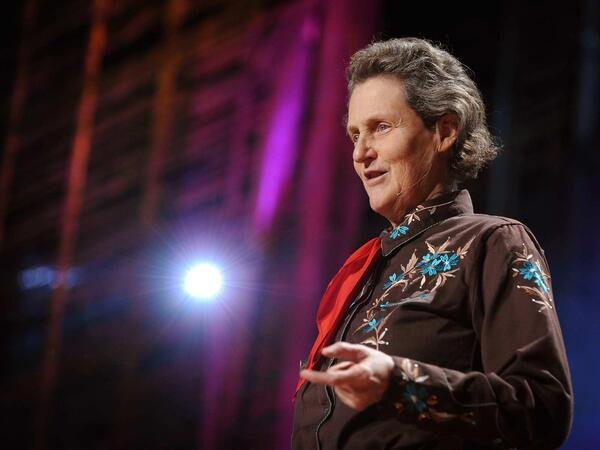
Celebrities with Asperger’s Syndrome – Why Are They Able to Show Their Talents?
When Elon Musk, the American technology billionaire, hosted the American comedy show “Saturday Night Live” for eight nights, he said that he was the first host with Asperger’s Syndrome in the history of the show. Musk revealed his Asperger’s syndrome and laughed at himself, “Do you think I will still be a normal guy who is easy to get along with?”
Society is beginning to pay attention to Asperger’s syndrome. Have you ever wondered who else has Asperger’s Syndrome? Sperger’s syndrome is a type of autism spectrum disorder in which patients have social and communication difficulties, stubbornness, or narrow interests. They may have difficulty understanding routines and failing to appreciate nonverbal communication. Because many people with Asperger’s syndrome have specific and persistent interests, they often show special talents. Many celebrities are patients with Asperger’s syndrome.

Susan Boyle
Aunt Susan became popular with the Les Miserables theme song “I Dreamed A Dream” on the British talent show Britain’s Got Talent. She released an album in 2009, which has sold more than nine million copies worldwide. In an interview, she revealed to The Observer that she was bullied at school when she was a child because she was “different” from her classmates. At that time, doctors diagnosed her with brain damage caused by lack of oxygen at birth, but it was not until she was 52 years old that she was diagnosed with Asperger’s syndrome. She often feels like she is being watched and commented on by others. On the contrary, when performing on stage, she feels that she is a different person and feels very comfortable. She said being diagnosed with the disease would not change her life. “I think people will understand me and my style better.”

Temple Grandin
Dr. Grandin is a livestock rights scholar at the University of Colorado and an advocate for autism spectrum enlightenment. She was diagnosed with high-functioning autism when she was a child. She would often crawl under the sofa cushions or wrap herself tightly in quilts. External physical pressure could help relieve her anxiety, so she invented a hugging machine in college ( hug machine), which has been shown to be effective in reducing stress in patients with sensory oversensitivity. In addition, she found that there are many details in the slaughterhouse that may frighten animals, including waving flags, standing water, and sounds. She designed the “stairway to heaven” in the slaughterhouse, using arc-shaped passages to reduce the pressure on the cattle before being slaughtered, ensuring that the animals can still live with dignity before death. In recent years, she has continued to speak on behalf of people with autism spectrum disorder. Her story was written into “The Anthropologist on Mars” by neurologist Oliver Sachs and was also made into the movie “Temple Grandin” by HBO.

Bill Gates
Bill Gates is suspected of having Asperger’s. The Time magazine article “Diagnosing Bill Gates” mentioned that he has some characteristics that are very similar to Asperger’s, such as being suddenly angry and sitting up when hearing opposing opinions. Will rock back and forth when sitting on a chair, avoid eye contact, dislike social activities, etc. When he shook hands with South Korean President Park Geun-hye, he put his other hand in his pocket and made a fuss about it, suspecting that it was a social disorder caused by Asperger’s syndrome. But there is no evidence that Bill Gates has Asperger’s syndrome.

Mark Zuckerberg
According to a column in The Economist magazine, Facebook founder Mark Zuckerberg has also been accused of having “a bit of Asperger’s qualities.” Former Facebook engineering director Huang Yishan mentioned that Zuckerberg “listens to others when they talk.” He’s not very good at responding.” In the movie “Social Network”, Zuckerberg was portrayed as a straightforward college student who was not good at getting along with others, so many people thought that his role in the play was also a little bit… Asperger’s syndrome, but there is no evidence that Mark Zuckerberg has Asperger’s syndrome.

Michelangelo
Michelangelo was an outstanding sculptor, artist and architect during the Renaissance. In a study published in the Journal of Medical Biography, Dr Muhammad Arshad and Professor Michael Fitzgerald of Trinity University Dublin conducted a literature review and analyzed Michelangelo’s behavior and its relevance to patients with Asperger’s syndrome and Diagnostic criteria are compared. The article mentioned that Michelangelo’s monotonous work process, minimal interest, and social and communication difficulties are very similar to the behavior of several patients with Asperger’s syndrome.

Albert Einstein
Professor Baron-Cohen of the Autism Research Center of the University of Cambridge pointed out that Einstein did not like to get along with others when he was a child. Before the age of seven, he would obsessively repeat certain sentences. After analysis, he was believed to have Asperger’s syndrome. Of course, some people disagree with this diagnosis. Glen Elliott, a psychiatrist at the University of California, San Francisco, doesn’t buy it. He believes that this kind of biographical behavioral record is not sufficient as a basis for diagnosis. There are too many possibilities to explain the reasons behind these behaviors. For example, high intelligence itself can explain Einstein’s behavioral traits. He also said: “Einstein had a sense of humor, which is not common among people with Asperger’s.”

Why are so many celebrities “suspected” of having Asperger’s?
In addition to the media’s desire to dig into celebrities’ privacy, Asperger’s diagnosis has a complicated story.
Let’s first talk about the history of Asperger’s and autism. Dr. Eugen Bleuler was the first physician to introduce the concept of “autism.” In 1911, he used the term to refer to a small group of patients with schizophrenia. In 1943, Dr. Leo Kanner specifically described cases of children with emotional or social disorders. In 1944, Dr. Hans Asperger published similar findings and called it “autistic psychopathy.” However, because Dr. Asperger published his paper in German, it did not begin to receive widespread attention and discussion until the 1980s. In the 1990s, it was included in ICD-10 (a diagnosis coded by the World Health Organization) and DSM-IV (U.S. The Academy of Psychiatry’s Diagnostic and Statistical Manual of Mental Disorders, Fourth Edition), became a clear diagnostic name.
Fast forward to the present, and Asperger’s syndrome is a “lost diagnosis of history.” Studies have pointed out that the specificity and diagnostic consistency of Asperger’s syndrome are not high. The academic community no longer distinguishes autistic patients by sub-classification, but believes that the spectrum is more suitable to present the severity of autism spectrum disorder. In the fifth edition of the Diagnostic and Statistical Manual of Mental Disorders (DSM-V) published in May 2013, the diagnostic name Asperger’s syndrome has been officially canceled and classified as “autism spectrum disorder” or translated as “autism spectrum disorder”. “Autism spectrum disorder” (ASD)
The rough diagnostic criteria for autism spectrum disorder are as follows
- Impairments in social communication and social interaction in any setting, regardless of general developmental delay
- Limitations, repetitive behaviors, interests, and activities
- Symptoms must appear in early childhood
- Symptoms causing impairment in daily life functions
This diagnosis, which has risen and disappeared in the past 20 years, has helped many scholars and doctors understand the characteristics of autism. Some retrospective studies have examined whether ancient celebrities (such as Michelangelo in the 15th century) had Asperger’s, but the actual status is unknown and opinions vary. It is important that we use these celebrities who may have some Asperger’s “idiosyncrasies” to understand and further tolerate patients with social or communication disorders.
“The Economist” column mentioned, “Some Asperger’s traits are very similar to those of computer engineers: obsession with details, passion for numbers, rules or machines, liking for repetitive tasks, and lack of sensitivity to society. “People with Asperger’s syndrome or other autism are not all intellectually deficient or geniuses, but their focus and persistence are at work, and they are often able to show off their talents and discover details that ordinary people tend to overlook!












